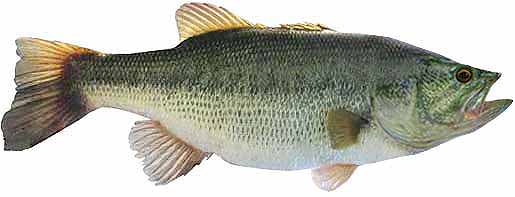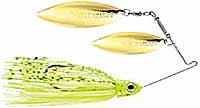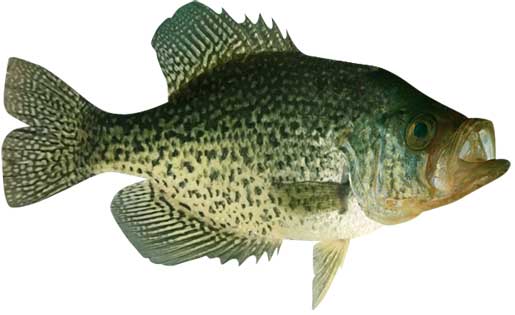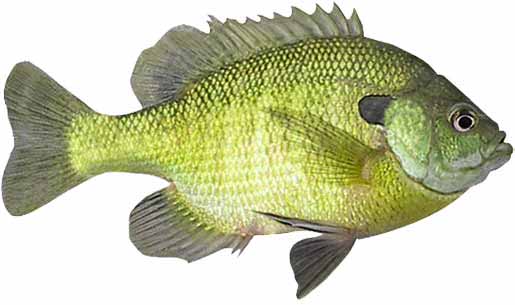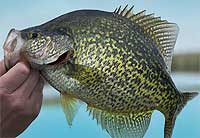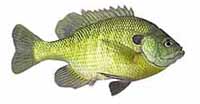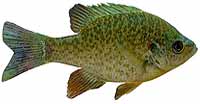Fishing Report For Lake Weir, FL
By Rick Seaman
September 26, 2025
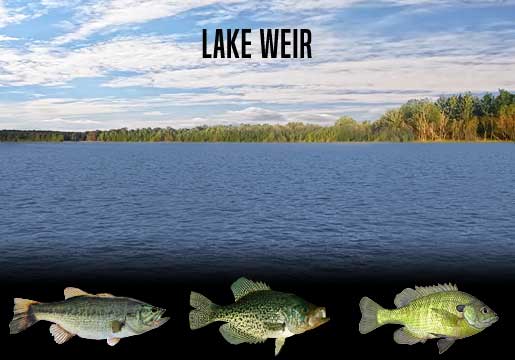
Fishing Reports
Popular Fish Species Lake Weir, FL
Largemouth Bass
Current Report: Good To Very Good
FALL. Now that Fall has arrived, bass here are moving shallow and following schools of baitfish into shallow cover around 4 to 6 feet of water. Currently frogs, vibrating jigs, and slow-rolled spinnerbaits are catching most of the bass. Later in Fall, as deeper water cools, bait and bass move out to ledges, channel edges, points and humps where flutter spoons and jigs are often good choices.
WINTER. Winter will isolate them around slightly deeper structure, flats, points and creek channels. They can be found from 10 to 20 feet deep. Here they hold, feeding less aggressively, awaiting warmer water to return in Spring. Locals report success working worms, jigs and drop shots very slowly.
SPRING. Once water temperatures rise into the high 50's, largemouth will move from deep wintering holes, to shallower water nearby spawning areas. Vibrating jigs, swim jigs and spinnerbaits typically get bites along weedlines away from shore. At this time they are feeding aggressively and preparing for the spawn. Once water warms into the mid to high 60's, they will move into 2 to 6 feet of water, and create nests, then lay their eggs. Immediately afterwards, females move to deeper water and males remain to guard the eggs, and then the fry. After a couple weeks, the males also move to slightly deeper water. Crankbaits, vibrating jigs, plastic worms and swimbaits are catching bass during this period.
SUMMER. Water temperatures will warm considerably in Summer. Bass will feed shallow, early and late in the day, where they will be caught on topwater, crankbaits and swimbaits. Wacky-rigged stick worms always catch finicky bass when the bite is slow. Largemouth bass here feed on gizzard shad, threadfin shad, small sunfish and crawfish. During the hotter parts of the day, they are being caught on points, channel edges, ledges and brush fish attractors 10 to 20 feet deep.
Black Crappie
Current Report: Good To Very Good
FALL. Baitfish, which are moving into shallower water, are drawing crappie into these areas. They are feeding heavily, 5 to 10 feet deep, in preparation for the cold Winter. Minnows, hair jigs, and crappie jigs, are good options during this feeding marathon. Late fall starts the migration deeper, toward winter holding areas, for both crappie and baitfish. Small flutter spoons are a good option during this transition
WINTER. Once the shallows start cooling rapidly, crappie will migrate to deeper holding areas, mostly off shore. At this time they are typically caught using a very slow presentation, in 15 to 20 feet of water. They often suspend in open water, relating to some cover, or structure change.
SPRING. In early Spring, crappie begin staging in 8 to 10 feet of water, just outside spawning bays and shallow flats. Spring is prime time to be on the water, as crappie have moved shallow to spawn. At that time, they are typically caught in 2 to 4 feet of water. Vegetation, brush fish attractors and docks are where most anglers catch crappie using small crappie jigs or live minnows. After the spawn, crappie typically move outside the spawning area and hold on cover nearby. Once they move even deeper, anglers report success using fish finders and forward facing sonar to locate schools of crappie, which tend to stack vertically around cover. Light tackle, with 4 lb to 8 lb line, is a popular choice.
SUMMER. Water temperatures warm, and crappie fishing is usually pretty good. Now that the spawn is over, and the hot Summer sun is warming the shallows, crappie have retreated to depths of 15 to 20 feet, or embedded in the shade of medium-depth, heavy vegetation. This is a good time to focus around brush fish attractors and deeper docks. Anglers are also locating schools of crappie hanging around deep structure and ledges.
Bluegill
Current Good
Bluegill are a primary food source for predator fish here, as well as a fun fish to catch for all ages.
FALL. Cooling, Fall weather drops the water temperature in the shallows and is luring bluegill into the shallows along the shoreline. Shallow, weedy areas with deep water close by are drawing bluegill in. Later in Fall, as the shallows get colder, bluegill will move slightly deeper in many of the same areas.
WINTER. Cooling shallows have driven the bluegill back to deeper cover in water ranging from 6 to 15 feet deep. In areas with no cover, anglers typically find them around ledges with sharp drops into deeper water.
SPRING. In early Spring, bluegill migrate from winter holding areas toward the weedy, shoreline areas, and are typically caught around 1 to 5 feet deep. As the water warms to the mid 70's they will begin the spawning ritual, building nests in 1 to 3 feet of water. Many of the bigger bluegill prefer to spawn a bit deeper, depending on water clarity. Small spinners and swimbaits, or jigs tipped with small pieces of nightcrawlers are good choices for catching a lot of bluegill in spring. A hook, line, weight and bobber with small pieces of worms also catches plenty of bluegill.
SUMMER. Following the spawn, most of the bigger bluegill migrate to slightly deeper water, around 4 to 8 feet deep. They prefer weedy areas, often hanging out on steeper banks where they can move up and down to feed, without having to travel a great distance. Small spoons, underspins, and mini-crankbaits are catching some of the bigger bluegill. Earthworms are also catching good numbers.
Fishing Video
Fish species to fish for...
Guide to fishing for largemouth bass, black crappie, bluegill and redear sunfish at Lake Weir in Florida.
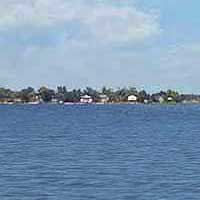
Lake Weir is a 5,700-acre lake with about 15 miles of shoreline. Big bass and fat crappie are the primary targets here, plus there is good fishing for bluegill and redear sunfish. The lake is wrapped in developed areas with homes and boat docks, as well as shallows with heavy vegetation, making fishing from the bank quite difficult.
Primary fish species to catch
Click images for fishing tips and details about each species.
Today's Weather & Forecast
Public Boat Launch Ramps & Landings
Carney Island Boat Launch Ramp
Located mid lake, west side, off SE 115th Avenue, this is a six-lane, concrete ramp with docks and lots of paved parking.
Hope Boat Launch Ramp
Located in the southwest section of the lake, south side, off SE 115th Avenue, this is a four-lane, concrete ramp with docks and paved parking.
Fishing License
Click here for a Florida Fishing License.
Map - Fishing & Camping Areas
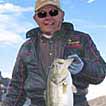
Rick Seaman is a fishing enthusiast with over five decades of fishing experience, a retired tournament fisherman, author of numerous published articles on fishing, and co-author of the book "Bass Fishing - It's not WHAT you throw, It's WHERE you throw it".
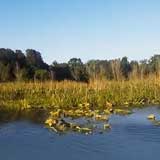
Contact Information
Carney Island Recreation Area
13275 SE 115th Ave
Ocklawaha, FL 32179
352 671-8560
Fishing lakes in each state
021925
Lake Weir, Florida Report
FLORIDA


Fishing for crappie and bass in western FL.


